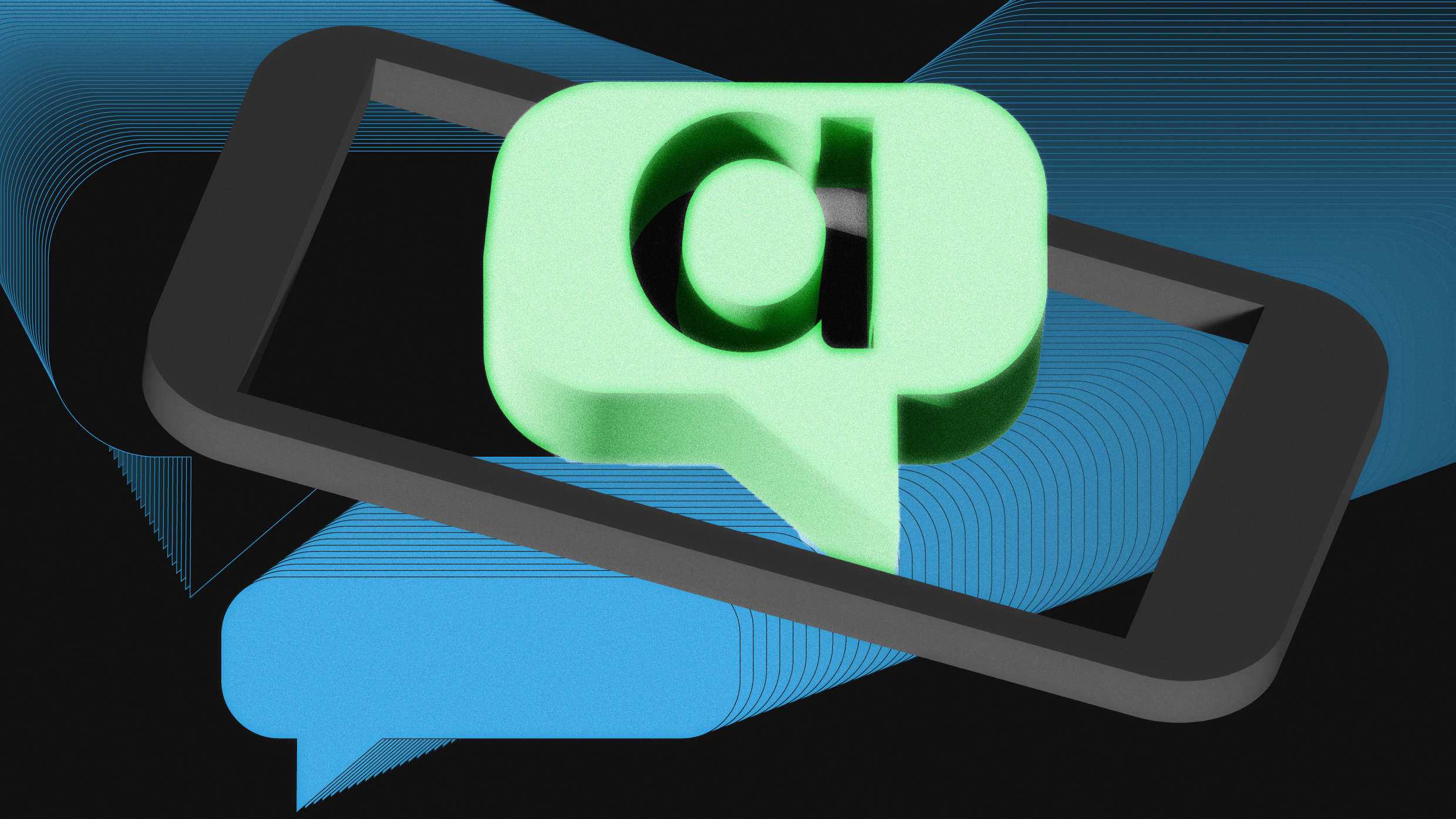It’s 6:30 a.m., a glorious, rare morning when neither my dog nor my kids have pulled me out of bed yet. But my alarm goes off anyway. I’m taking part in a blurry-eyed ritual I’d promised myself to never deal with again: I’m ordering a new iPhone.
For the past four years, I’ve been using Android phones exclusively. I’d written so many stories on Google “getting” design that it seemed like it was time to try using its Pixel line. I’m glad I did. They are superb phones: well-priced and thoughtfully made.
But I went back to the iPhone anyway.
I do not believe the iPhone is a better-designed product than a modern Pixel. I was not lured back to Apple by aesthetics or the new features I’d missed over the past few years (like memoji or MagSafe). Frankly, I wanted nothing to do with iCloud, either, which had pestered me so aggressively to upgrade storage that it felt like my iPhone was a telemarketer on Apple’s behalf.
But I capitulated to Apple for one simple reason: iMessages. While Android controls as much as 85% of the smartphone industry globally, and Facebook-owned WhatsApp, with its 2 billion users, is the most popular messaging service globally, Apple still rules the U.S.
In fact, Apple controls 53% of the U.S. smartphone market. And while it does not publish data on iMessage use, what I’ve observed in terms of my own social circle using iMessages, Apple’s market penetration feels more like 90%. Almost everyone I know uses it.
While iMessages is technically compatible with the most basic text messaging systems standard on all phones, the platform only really works with other iMessage users, especially if you’re trying to send video or images. Because Apple—with its fingers in its ears about its own monopolistic behavior—doesn’t make iMessages for Android. As came to light during Apple’s trial this year with Epic Games, multiple Apple executives have admitted that opening iMessages up to Android could encourage users to leave the iPhone. Apple’s decision to limit interoperability with Android is purposeful, strategic, and, in my case, highly effective at getting me to return to its platform.
The iMessage flex
I still remember texting friends and family during the first few weeks with a Pixel 2. “GREEN BUBBLE?!?” was their first reaction. Because, of course, Apple’s UI marks iMessage users as blue, and any other SMS as green. Apple’s carefully crafted UI labels you as different—and given the price premium of Apple devices, that “different” is still considered “lower class” by pretty much every green bubble meme in existence.

That roasting was fine, and temporary. But what came next was, I’d argue, legitimately damaging to my relationships. My green bubble wasn’t just a signal of me being on Android. It was more a signal of “this message might go through, and it might not. Because we don’t really care if it’s delivered.”
I began to live in fear of iMessage group chats. Inevitably, I would lose messages in attempts to hold my tin can with a string up to Apple’s technology. I just couldn’t see texts that other people could see. It takes only a couple of SMSs not going through for group banter to devolve into nonsense. (No joke: A good friend told me that after a promising first date, his date texted him to chat. He followed up, but she ghosted. Only months later did he learn that her Apple messages hadn’t made it to his Android phone, and were lurking on his dormant iMessages account.)
Living without iMessages only gets worse when rich media is involved. Our old text-message technologies aren’t adequate for sending high-resolution images and video. It’s why apps like iMessages—which juggle old text messaging with data-heavy MMS using all sorts of extra servers—absolutely do need to exist. But Apple doesn’t support Android’s open MMS standard (which is technically called RCS). In a group-chat context, images and videos sent from iPhones often wouldn’t come through to me at all. In one-on-one chats, compressed images were a bit fuzzy. And videos? Videos looked like something you’d shoot on a 2004 flip phone. Zero exaggeration.
As my children grew up, I’d receive videos from parties and playdates. Having the ability to capture and share these magical everyday moments is the best part of having a smartphone. But without iMessages, they were nonsensical—the compression was so bad they weren’t even worth watching. Each time I tried, the loss simply made me sad.
The real catch about this iMessage divide is that it’s not the sort of pesky design problem you might acclimate to over time. It was an ongoing pain that literally felt like Apple was holding my relationships with my friends and family, along with my own memories, technologically hostage. I’d like to think I could fight that power by voting with my dollars, by being that green bubble, by inspiring others to try alternate texting platforms or smartphone OSs. But after four years of moments lost, I was done. Life is too short to be a pawn on the corporate battlefield.
So how’s life with the iPhone 13? (My last iPhone was the 7.)
Being back on iMessages has been life changing, mostly because I’m able to communicate with the most important people in my life with more fidelity than I did on an Android. Otherwise? It’s fine. The camera doesn’t feel any better than the Pixel’s. Apple’s prudish app policy means there’s no Pax app for (legally!) using cannabis. In terms of overall user experience, I could quibble about various micro pieces of UX—there are bits I prefer about the iPhone, and bits I prefer about the Pixel. However, there’s nothing I haven’t adjusted to in a few weeks.
The truth is, both Apple and Google make great smartphones these days. But only one has iMessages.
Recognize your brand’s excellence by applying to this year’s Brands That Matter Awards before the final deadline, June 7.
Sign up for Brands That Matter notifications here.
